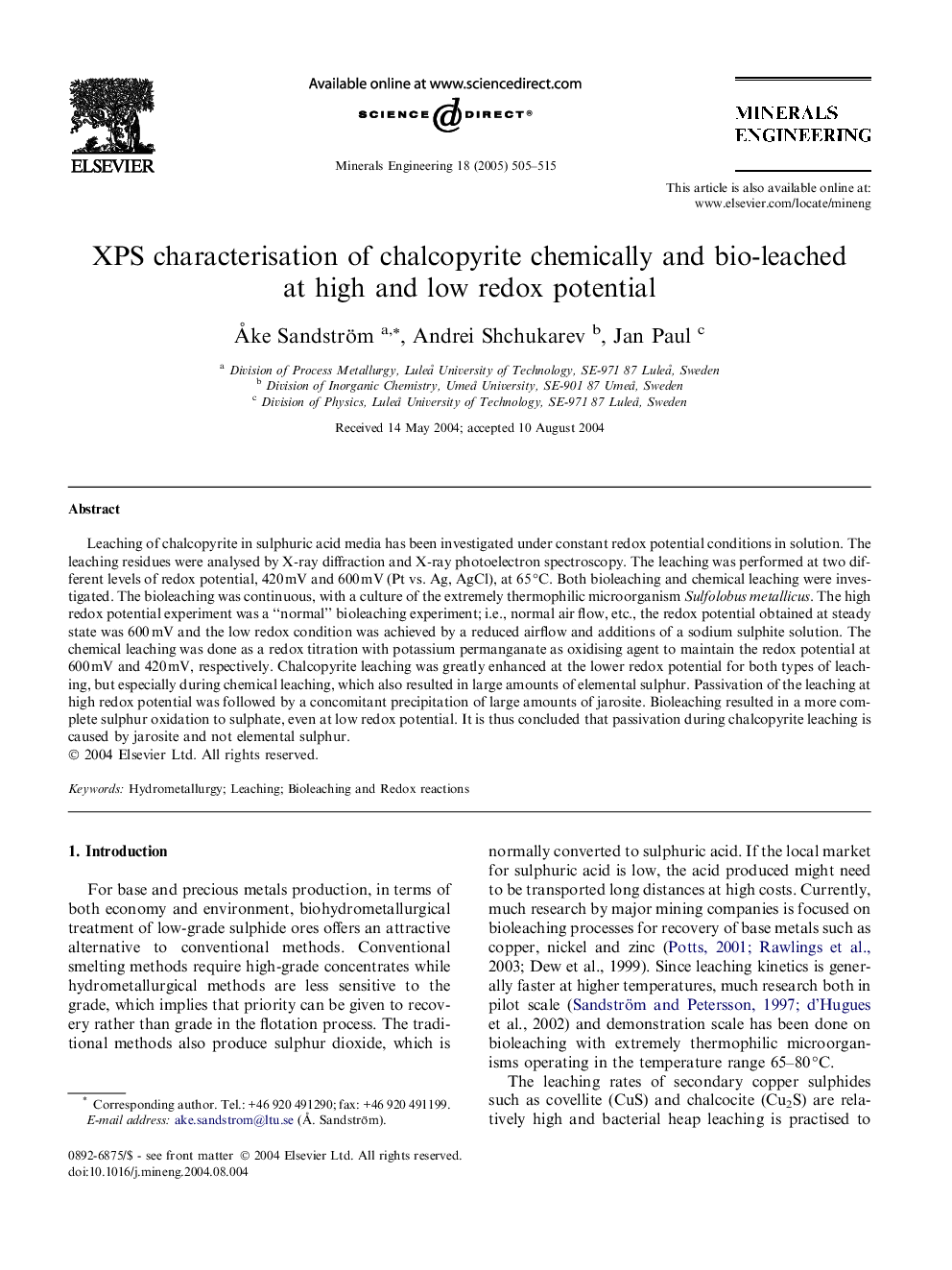| Article ID | Journal | Published Year | Pages | File Type |
|---|---|---|---|---|
| 10279854 | Minerals Engineering | 2005 | 11 Pages |
Abstract
Leaching of chalcopyrite in sulphuric acid media has been investigated under constant redox potential conditions in solution. The leaching residues were analysed by X-ray diffraction and X-ray photoelectron spectroscopy. The leaching was performed at two different levels of redox potential, 420 mV and 600 mV (Pt vs. Ag, AgCl), at 65 °C. Both bioleaching and chemical leaching were investigated. The bioleaching was continuous, with a culture of the extremely thermophilic microorganism Sulfolobus metallicus. The high redox potential experiment was a “normal” bioleaching experiment; i.e., normal air flow, etc., the redox potential obtained at steady state was 600 mV and the low redox condition was achieved by a reduced airflow and additions of a sodium sulphite solution. The chemical leaching was done as a redox titration with potassium permanganate as oxidising agent to maintain the redox potential at 600 mV and 420 mV, respectively. Chalcopyrite leaching was greatly enhanced at the lower redox potential for both types of leaching, but especially during chemical leaching, which also resulted in large amounts of elemental sulphur. Passivation of the leaching at high redox potential was followed by a concomitant precipitation of large amounts of jarosite. Bioleaching resulted in a more complete sulphur oxidation to sulphate, even at low redox potential. It is thus concluded that passivation during chalcopyrite leaching is caused by jarosite and not elemental sulphur.
Keywords
Related Topics
Physical Sciences and Engineering
Chemical Engineering
Chemical Engineering (General)
Authors
Ã
ke Sandström, Andrei Shchukarev, Jan Paul,
